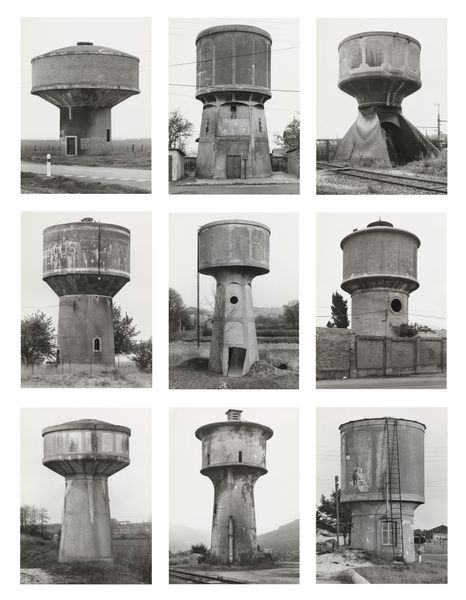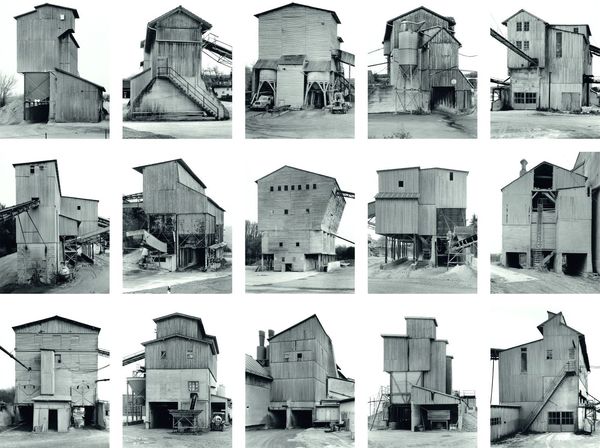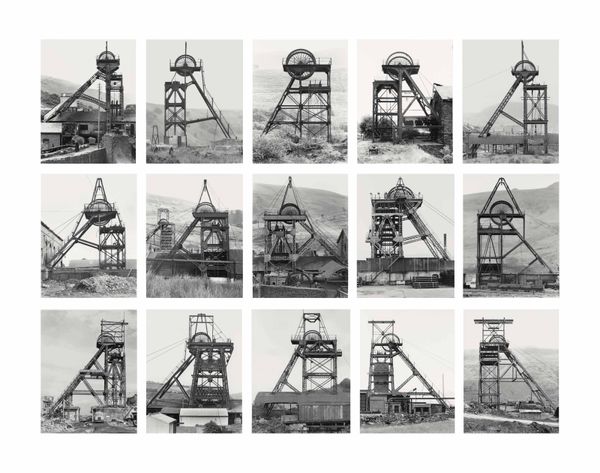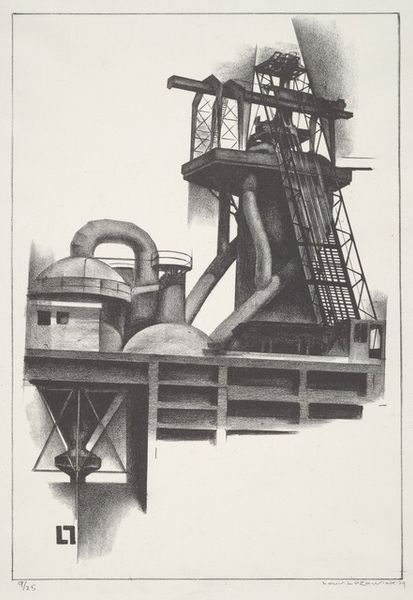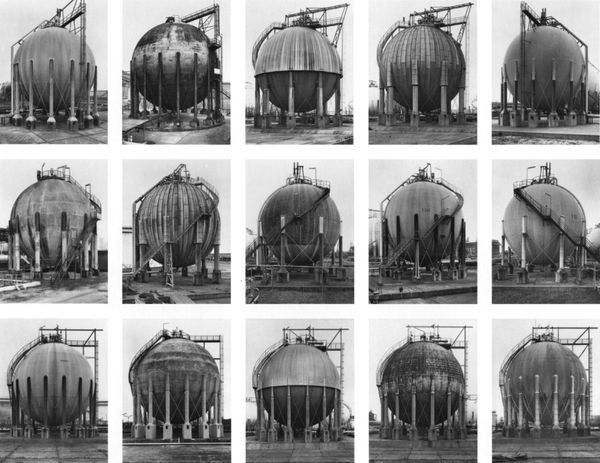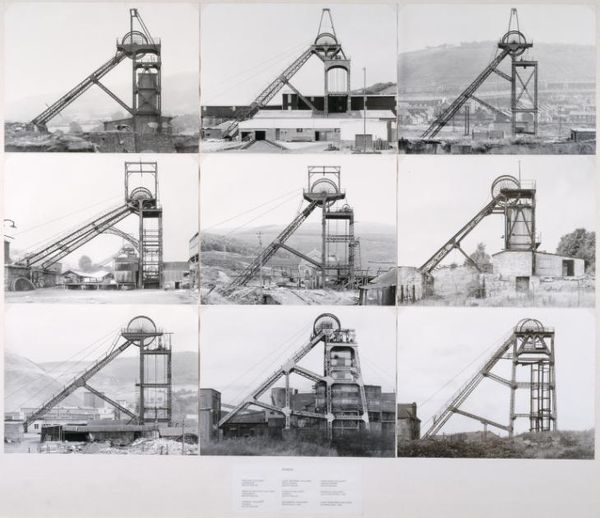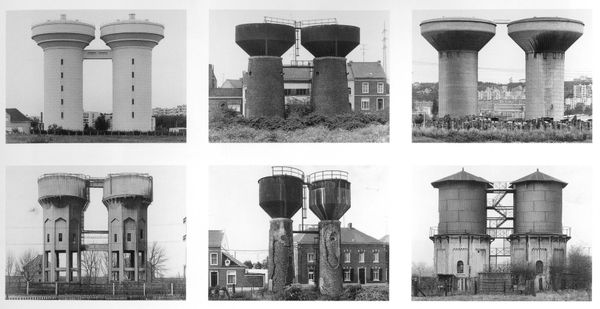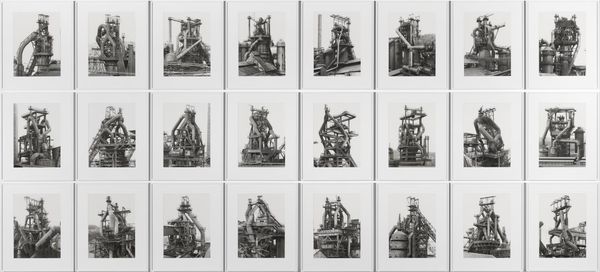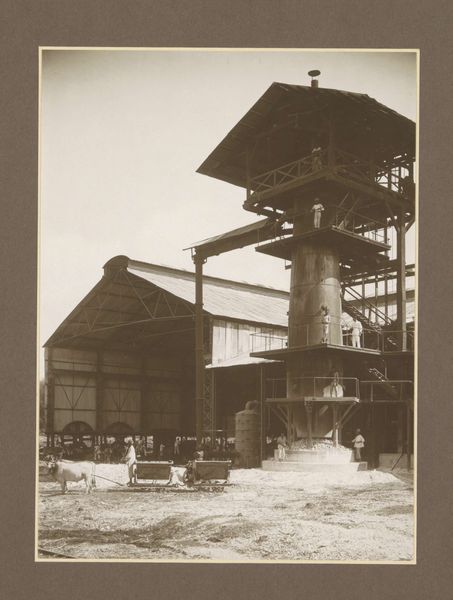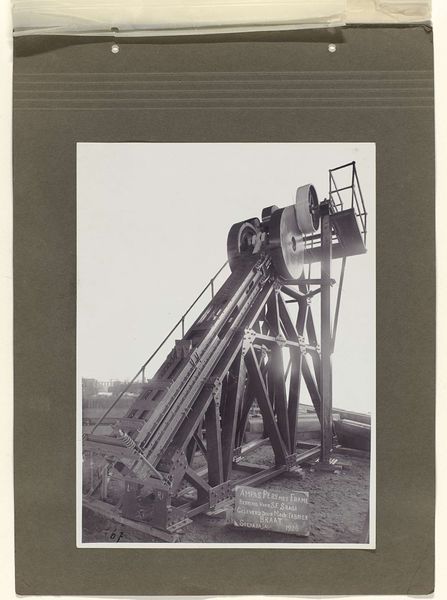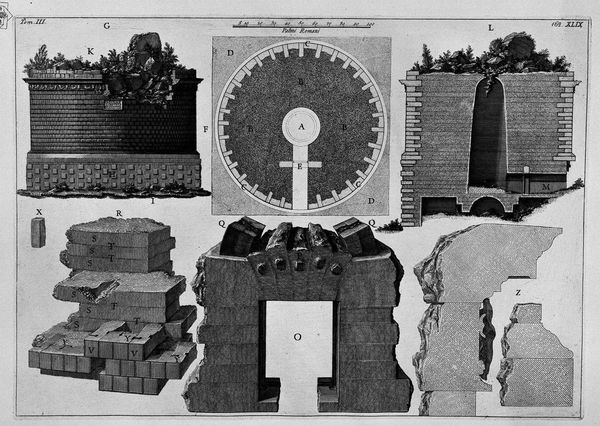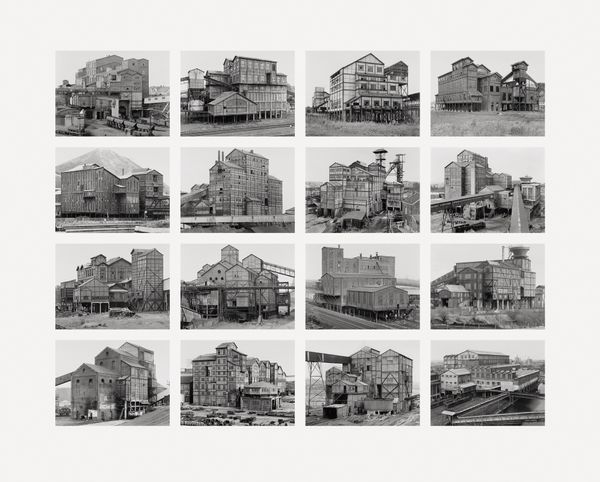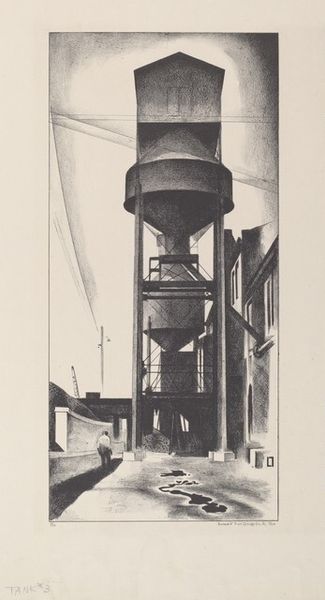
Dimensions: unconfirmed: 1495 x 1003 mm
Copyright: © Bernd & Hilla Becher | CC-BY-NC-ND 4.0 DEED, Photo: Tate
Curator: Bernd Becher’s work, "Coal Bunkers", presents us with a typology of industrial architecture. Look at this grid of photographic images. Editor: They're like silent sentinels…stark, almost brutally so. I feel a weird sense of beauty in their sheer functionality, though. Curator: Precisely. Becher’s work often explores the intersection of industry and landscape, speaking to the ways labor and capital shape our environments. This work highlights the architecture and its role in the coal industry. Editor: It's interesting how he abstracts them, makes them almost like monuments. You know, if you stripped away all context, they could be ancient ruins from some lost civilization. Curator: These structures embody the socio-economic forces of their time, revealing how industry leaves its mark on the land and its communities. They prompt us to examine our relationship to industrial labor. Editor: Absolutely. It makes you think about the lives lived in and around these hulking things. Makes you wonder about what remains, what disappears, you know? Curator: Exactly. The artist's eye allows us to revisit the significance of these structures. Editor: Yeah, there's a quiet power in this. Makes you consider the ghosts that linger in the architecture.
Comments
Join the conversation
Join millions of artists and users on Artera today and experience the ultimate creative platform.
tate 6 months ago
⋮
Husband and wife team Bernd and Hilla Becher began photographing old industrial sites in the 1950s, and described their subjects as ‘buildings where anonymity is accepted to be the style’. The coal bunkers in these photographs were located in Germany, France and Britain, while the photographs of pitheads were all taken at British collieries between 1965 and 1973. Within a few years of completing this work, almost all of the structures had been demolished. Gallery label, May 2010
